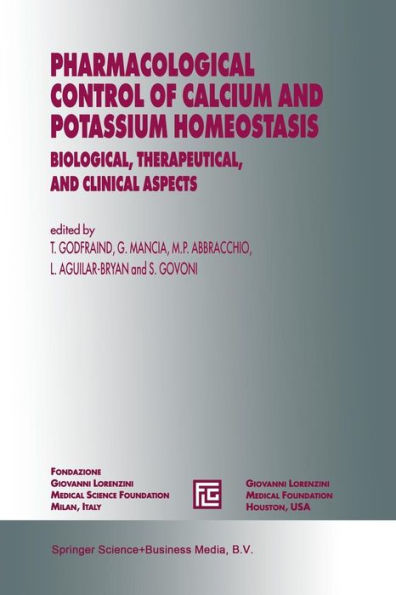5
1
9789401040563



Pharmacological Control of Calcium and Potassium Homeostasis: Biological, Therapeutical, and Clinical Aspects / Edition 1 available in Hardcover, Paperback

Pharmacological Control of Calcium and Potassium Homeostasis: Biological, Therapeutical, and Clinical Aspects / Edition 1
- ISBN-10:
- 9401040567
- ISBN-13:
- 9789401040563
- Pub. Date:
- 10/11/2012
- Publisher:
- Springer Netherlands
- ISBN-10:
- 9401040567
- ISBN-13:
- 9789401040563
- Pub. Date:
- 10/11/2012
- Publisher:
- Springer Netherlands

Pharmacological Control of Calcium and Potassium Homeostasis: Biological, Therapeutical, and Clinical Aspects / Edition 1
$169.99
169.99
In Stock

Product Details
| ISBN-13: | 9789401040563 |
|---|---|
| Publisher: | Springer Netherlands |
| Publication date: | 10/11/2012 |
| Series: | Medical Science Symposia Series , #9 |
| Edition description: | Softcover reprint of the original 1st ed. 1995 |
| Pages: | 275 |
| Product dimensions: | 6.30(w) x 9.45(h) x 0.02(d) |
About the Author
From the B&N Reads Blog
